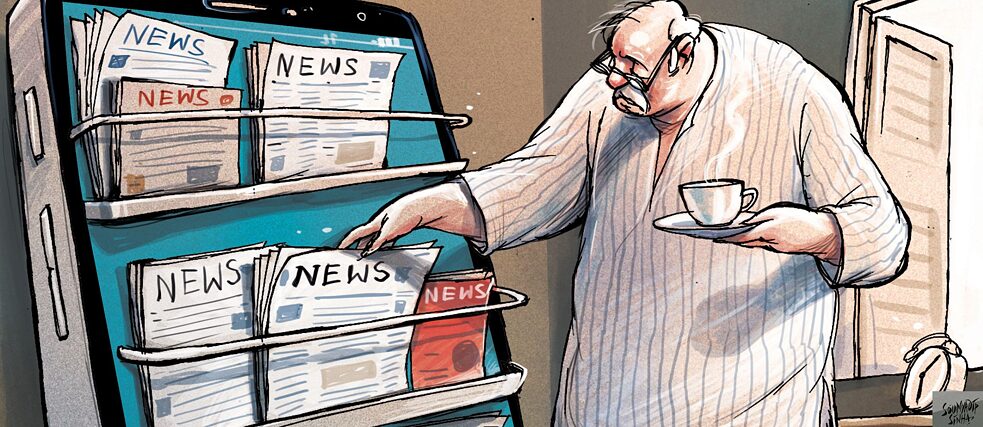Confirmation Bias
Bursting the Bubble of Confirmation Bias

The digital world influences us in more ways than we can imagine, with much of what we read online being targeted to us. That’s why it's important for us to ensure that our opinions are still our own.
By Rebecca Johns
As human beings, it is but natural for us to search for social and physical environments that reflect our personalities and self-views. That is where we find our comfort zone. However, personality psychologists are now taking a closer look at how this trait encourages us to prefer media content that reinforces our attitudes and dispositions.
In other words, we consume media to stimulate our minds, to hold discussions with our peers, but also to reinforce our beliefs and opinions.
Time to de-influence
What we watch and read helps us decide things like which football team we support, what trends we follow, or what foods we wish to try. These ideas ultimately influence the boundaries of our most fundamental ideas. What are our goals and desires, what is socially acceptable and what is not, what is good or bad?
This leads us to question whether we are being critical enough when we engage with the media as audiences. Are we uncritically following the narratives that are being fed to us? Are we allowing them to reinforce our confirmation bias?
What is Confirmation Bias?
Confirmation bias is the tendency to pay more attention to information that supports our existing viewpoint. As readers, we often ignore or dismiss ideas that we do not align with. This could lead us to develop a skewed perception of reality, as we disregard ideas that challenge our opinions. This can have significant implications, as it can hinder critical thinking, impair effective decision-making, and contribute to the polarization of opinions.
Find the full story
What are some of the strategies that we can use to interrogate media narratives?
One way is to be aware of what we are reading. With the world in the palm of our hand, it takes a few simple searches to contextualize what we are reading and where it comes from.
The second way is to be discerning. When you watch, hear, or read something that has an impact on you, or that lingers in your mind - find out more. Who is crafting the narrative? What are the responses to it?
Whenever we see something that seems too good to be true, we must consider that it may not be. Misinformation tends to build around the latest news cycle or trending topics, so those are the ones we should be most wary of.
The other danger is AI manipulation. When you look at an image, be careful to trace its origin. Notice any credible watermarks or logos. Because of confirmation bias we tend to favor our pre-existing beliefs. These are a few ways to interrogate them.
Look at both sides
Another way to question your perspective is to find out more from the opposite point of view. Whether in person or on the internet, it is important to develop well rounded opinions. Here we would do well to remember that for every topic there are multiple points of view, and we should be open to exploring them through healthy discussion.
In the end to really burst the bubble of confirmation bias, we need to ask a few simple questions of the content that is being served for our consumption. Am I hearing enough perspectives? Is the content I consume made by people who look like me? Does my content consumption make me uncomfortable or challenge my beliefs enough?